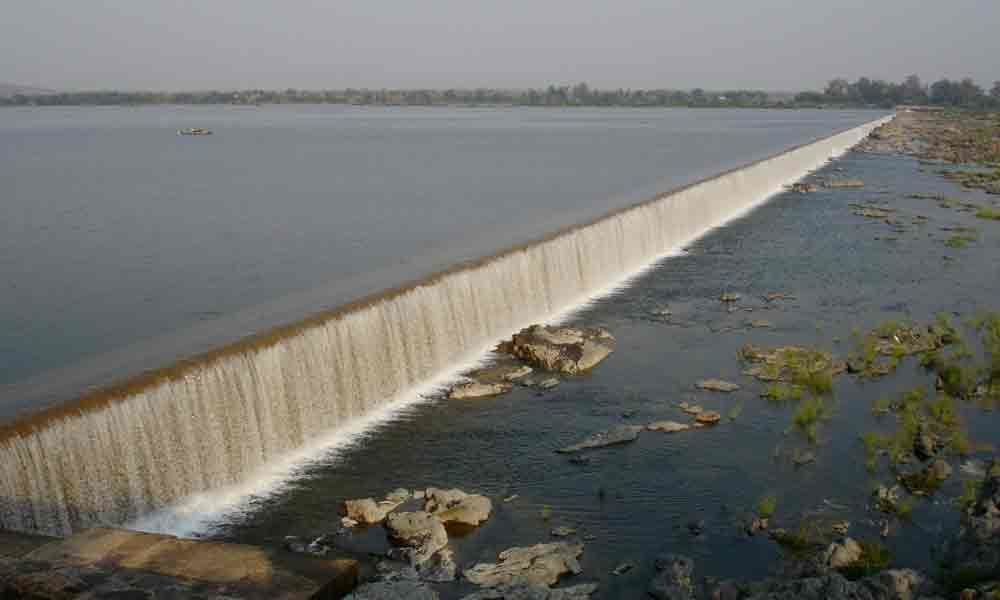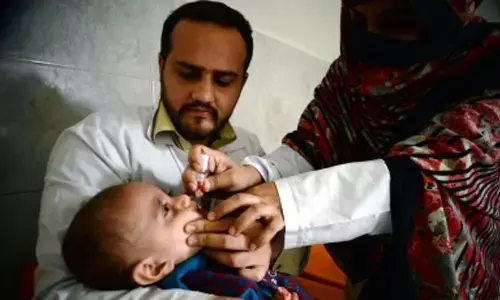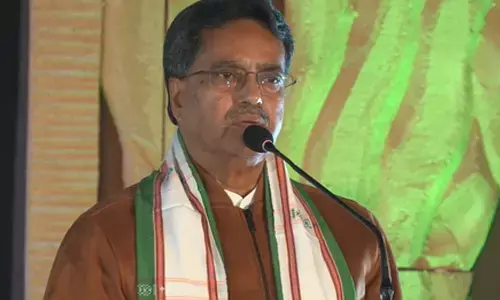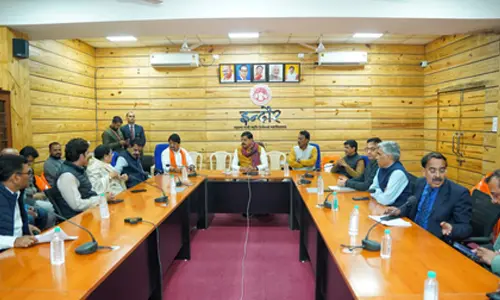Godavari waters: Myths and reality
 Godavari waters: Myths and reality
Godavari waters: Myths and realityOf late it has become a common propaganda that 2,500 tmcft of the Godavari floodwater drained into sea, and it should be conserved by building mega projects. The Godavari gets flash flood in two instalments - one in July and another in August - and each lasts just two or three days.
At that time all the gates on the Godavari dams /barrages should be opened up, otherwise these dams just get washed way. The flood flow of the Godavari all through even these three months are not constant or continuous.
If we really want to cap floodwater, a mega dam needs to be constructed after Sabari's Kunavaram and direct the flood into big reservoir of the size of half of West Godavari and half of Khammam. Like Great Wall of China, a strong sturdy bund needs to be constructed, vacating people of both the districts. Is it feasible?
The second question to be answered, if at all the Cotton Barrage gates are permanently closed, Konaseema and coastal Godavari districts become desert with salinity. The present scenario is seawater pushes itself the saltwater right up to 30 kms inside, both in Konaseema and West Godavari.
The release of water from Cotton Barrage regularly prevents further intrusion of seawater. Besides, the floodwater down from the Cotton Barrage enriches lankas (islands) and coastal regions of Konaseema with fertile silt. All through costal region, lakhs of fishermen eke their livelihood depend on the Godavari.
Therefore, flow of floodwater to sea would prevent seawater reaching the upper terrain. Besides, without freshwater flowing into the Godavari, the entire Konaseema becomes saline. Even in regular times also, release of water from the Cotton Barrage is must. Thus, it is a myth that we could store 2500 tmcft water.
Another myth is connecting the Godavari to Srisailam. This idea is an instant thought wave of both Chief Ministers at a meeting and then they asked the engineers to work it out. Obviously, such a mega project is being conceived by the would-be success of Kaleshwaram project.
However, it is disappointing this year that there is no sudden flashflood of the Godavari in July and as such the water from Medigadda could only be drawn up to Annaram that too just 15 tmcft. We all hope that there will be flashfloods in August which takes Godavari water to Mallannasagar and Kondla Pochamma Reservoir to attain full draw of 180 tmcft of water.
Then only we could say confidently, Kaleshwaram project a success. In Andhra Pradesh, Polavaram dam came to a standstill, no progress. Thus, the scenario of construction and utilisation of Godavari water is one of disappoint and disturbing.
Now engineers are concentrating on how to make the Godavari water flow to Srisailam against gravity. The present thinking is transfer of water from Dummagudam or Rampet to Srisailam or Nagarjunasagar, through motors, pipes, tunnels and gravity channels, the picture is hazy.
At Dummagudam, they could at the best construct a barrage of 15 tmcft, with a dam of 150 tmcft, there will be large scale submergence of forests of Telangana and Chhattisgarh. However, there is no guarantee that Dommugudem dam could collect 150 tmcft, when there is a barrage at Medigadda, Indravati alone could not supply that much of water.
Several suggestions were found in print media, as to how to transfer this water. One suggestion is to store temporarily in Nalgonda, Udayasagar and then take it by whatever means, including tunnels of Nallamalai Hills to Srisailam dam which is on a hill.
A P wants the water to go to Srisailam, so that it serves Rayalaseema through Pothireddypadu headworks. For Telangana, however, Nagarjunasagar is enough to serve the needs of canals of Telangana region. As per one report in a newspaper, roughly at one-point water was to be lifted 274 m high, yet at another point lift of 310 m high, for several kilometers - about 229 kms gravity canals and 131 km tunnels - to reach Srisailam.
The quantum of water to be transferred should be such that approximately Srisailam water attains 550 m high, so that Pothireddipadu headworks function though gravity.
For Telangana, it will be useful if water used at several points in Nalgonda before it reaches Srisailam. This point was not stressed by anybody. With a 15 tmcft barrage at Dummagudam or Rampur, it is impossible task to reach water to Srisailam. Please remember once again the Godavari is devoid of water from November and June. In fact, one could walk from one end to the other in Bhadrachalam even in February.
Several other suggestions which are not worth to consider are: First, put the water in Pulichintala which flows against gravity to the backside of Nagarjunasagar, lift it to the front side of Nagarjunasagar, the water reaches again by gravity to the backside of Srisailam dam, then by the help of turbines put the water to the front side of Srisailam.
The total water required to be transferred by any of the methods is one tmcft per day or four hundred tmcft per year. How could Dummagudam hold that much water?
Enough homework was not done, it is at the best a paper project, a myth. Better concentrate on Kaleshwaram and Polavaram where there is possibility of success.
Please don't take people for a ride. The technology we have in India is still in nascent stage and how long we could depend on imported technology?
-Dr K Nagaiah & Prof G Srimannarayana
(Dr K Nagaiah is Chief Scientist, CSIR-IICT, Hyderabad, and Prof G Srimannarayana is retired professor, Department of Chemistry, Osmania University, Hyderabad)














